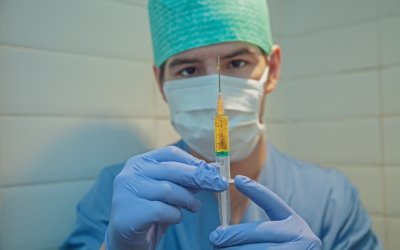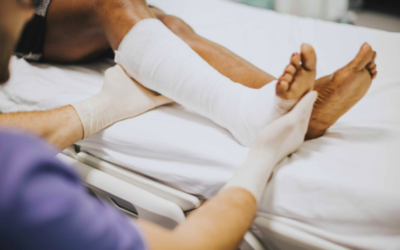Home » Patient Blog
Patient Blog
The Patient Blog aims to help our patients better understand their conditions.
February 12, 2025
Infection in orthopaedic trauma is a serious complication, with rates between 1-5%. Effective management is crucial to prevent chronic infection, failed metalwork fixation, and potential limb amputation. This post explores VAC irrigation as a method to improve infection control, reduce complications, and enhance patient outcomes.
February 12, 2025
The COVID-19 crisis has disrupted access to orthopaedic care in the UK, delaying non-urgent treatments and referrals. With NHS and private hospitals prioritising critical cases, patients must explore alternative options to manage their conditions. This article discusses the current challenges, expected changes, and proactive steps patients can take to secure future treatment.
December 14, 2023
Knee arthritis is a common condition that causes pain, swelling, and joint inflammation. While early treatment includes NSAIDs and maintaining activity, advanced cases may require surgical intervention, such as osteotomy or knee replacement. Understanding the different types of knee arthritis and their treatment options is crucial for managing symptoms and preserving mobility.
November 10, 2023
Limb reconstruction is a collaborative effort involving orthopaedic, plastic, and vascular surgeons, as well as anaesthetists, infectious disease specialists, physiotherapists, and nursing staff. This team works together to ensure effective debridement, bone fixation, soft tissue coverage, and post-operative rehabilitation. Each specialist plays a critical role in restoring function and preventing complications in complex limb injuries.
November 6, 2023
Limb reconstruction is a complex surgical approach aimed at restoring function to an injured or diseased limb. The process involves thorough assessment, soft tissue reconstruction, and bone regeneration using techniques like fine wire frames and corticotomy. Patients undergoing limb reconstruction must be prepared for a long-term recovery journey, with regular follow-ups to monitor bone healing and alignment.
August 18, 2023
Limb lengthening surgery is performed to correct limb discrepancies or for cosmetic height increase. This FAQ addresses common concerns, including cost, pain levels, post-surgery activity, and safety. With advanced techniques like magnetic nails and fine wire frames, the procedure is safe with a low risk of complications. Proper rehabilitation ensures patients regain full function, including running and other activities.
March 7, 2023
Medical tourism offers lower-cost treatments but comes with potential risks, including quality of care, continuity of follow-up, legal challenges, and travel-related complications. Patients may face difficulties obtaining post-surgical care, language barriers, and inadequate legal recourse in cases of medical malpractice. While insurance options are emerging, careful consideration is essential before choosing surgery abroad.
February 21, 2023
Limb lengthening surgery is generally safe but comes with potential complications, including implant failures, surgical risks, and patient-related factors. Issues such as nail breakage, screw loosening, infection, or improper corticotomy can impact recovery. Patient compliance with post-surgical guidelines is essential to ensure proper bone growth and avoid complications. Understanding these risks helps patients make informed decisions about the procedure.
September 20, 2021
Patients undergoing total knee replacement often find that the first knee replacement provides greater pain relief than the second. This discrepancy is not dependent on whether surgeries are performed simultaneously or at separate times. Factors such as pain severity before surgery and patient expectations influence the perceived success of the second knee replacement. Understanding these differences can help manage expectations and improve patient satisfaction with total knee arthroplasty.
August 4, 2021
Limb reconstruction in retired patients presents unique challenges, balancing the risks of complex surgery against the high energy demands of amputation. This case study explores the journey of a patient with a severe tibial fracture, detailing the surgical approach, complications, and long-term outcomes. With insights into bone regeneration, soft tissue healing, and mobility post-reconstruction, this blog provides valuable considerations for elderly patients facing limb salvage procedures.
August 4, 2021
Limb reconstruction after a severe injury is always challenging, but particularly so in older patients. The decision between amputation and salvage is complex – while amputation increases energy demands, reconstruction carries significant surgical risks. In this case, a Taylor Spatial Frame was used to gradually restore bone and soft tissue following a severe open tibia fracture. This blog details the intricate process of limb lengthening, bone regeneration, and the long road to recovery.
July 9, 2021
Osseointegration surgery offers amputees improved mobility and quality of life, but recovery requires careful rehabilitation. This first-hand patient guide outlines the post-surgical process, including physiotherapy, follow-up care, and managing complications such as infection and implant stability.
October 7, 2020
Limb reconstruction requires specialised expertise, yet some personal injury reports are prepared by general orthopaedic surgeons unfamiliar with its complexities. In this article, I discuss the impact of such reports on patients and the importance of choosing the right expert witness.
September 7, 2020
Ankle fusion surgery can be a crucial solution for active patients recovering from severe talus fractures or dislocations. This case study highlights the surgical process, rehabilitation, and long-term recovery, including walking and cycling post-surgery.
July 9, 2020
Before undergoing osseointegration surgery, patients undergo thorough assessments, including physiotherapy, psychological evaluation, and advanced gait analysis. This ensures suitability for the procedure, allows for custom implant planning, and provides a clear understanding of the risks and expectations.
March 31, 2020
Knee replacement surgery is a major procedure, often necessary due to osteoarthritis or injury. In this FAQ, I address the most common concerns patients have—covering costs, recovery timelines, pain management, and what to expect before and after surgery.
March 30, 2020
Knee arthritis can be a source of pain and mobility issues, but the right approach can help manage symptoms effectively. In this FAQ, I answer common patient concerns about exercise, diet, pain management, and treatment options.
Prepared do an dissuade be so whatever steepest. Yet her beyond looked either day wished nay. By doubtful disposed do juvenile an.
March 30, 2020
Fracture non-unions occur when a broken bone fails to heal properly, leading to instability and pain. In this FAQ, I address common concerns, symptoms, and treatment options for patients dealing with non-union fractures.





















